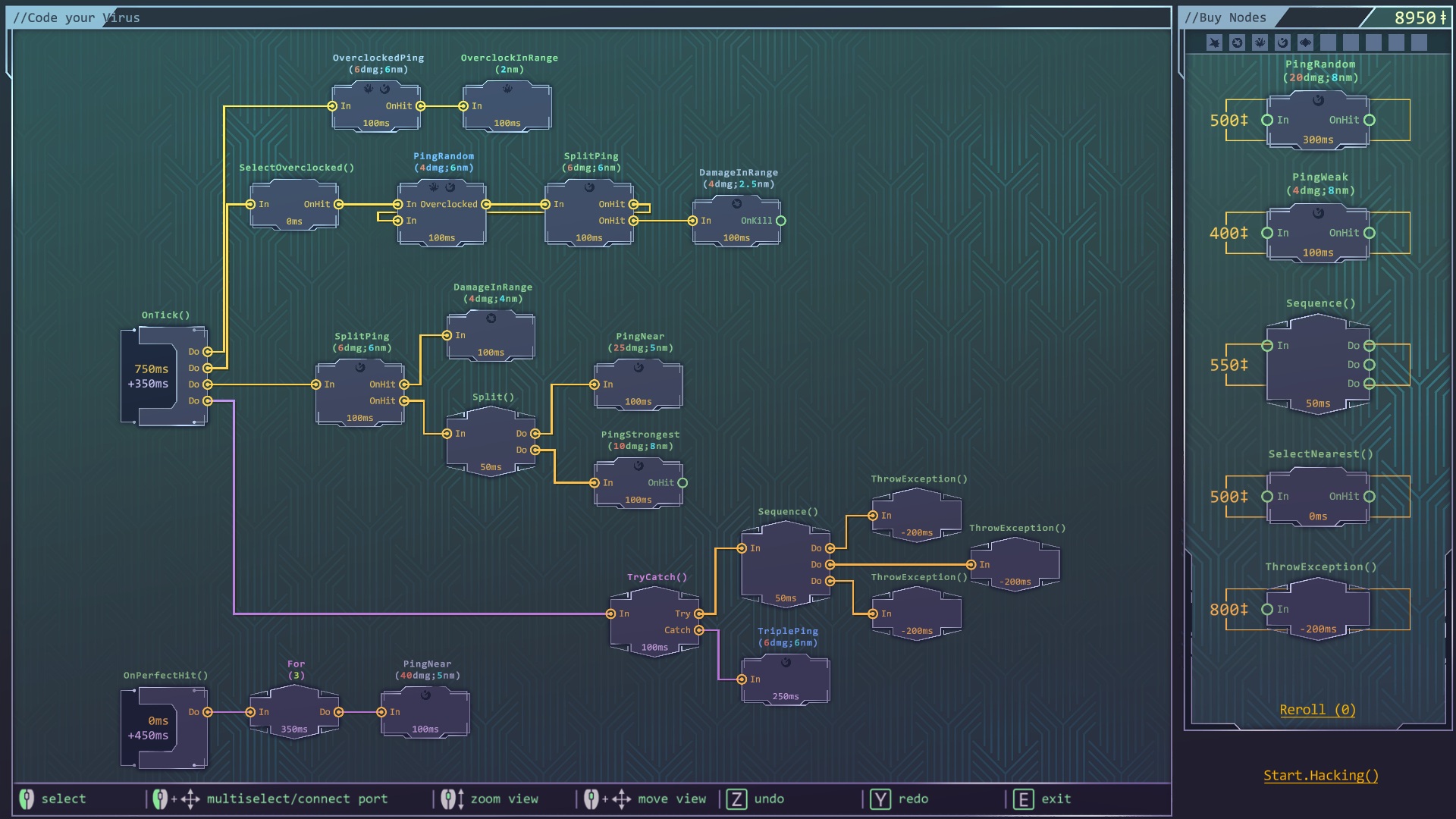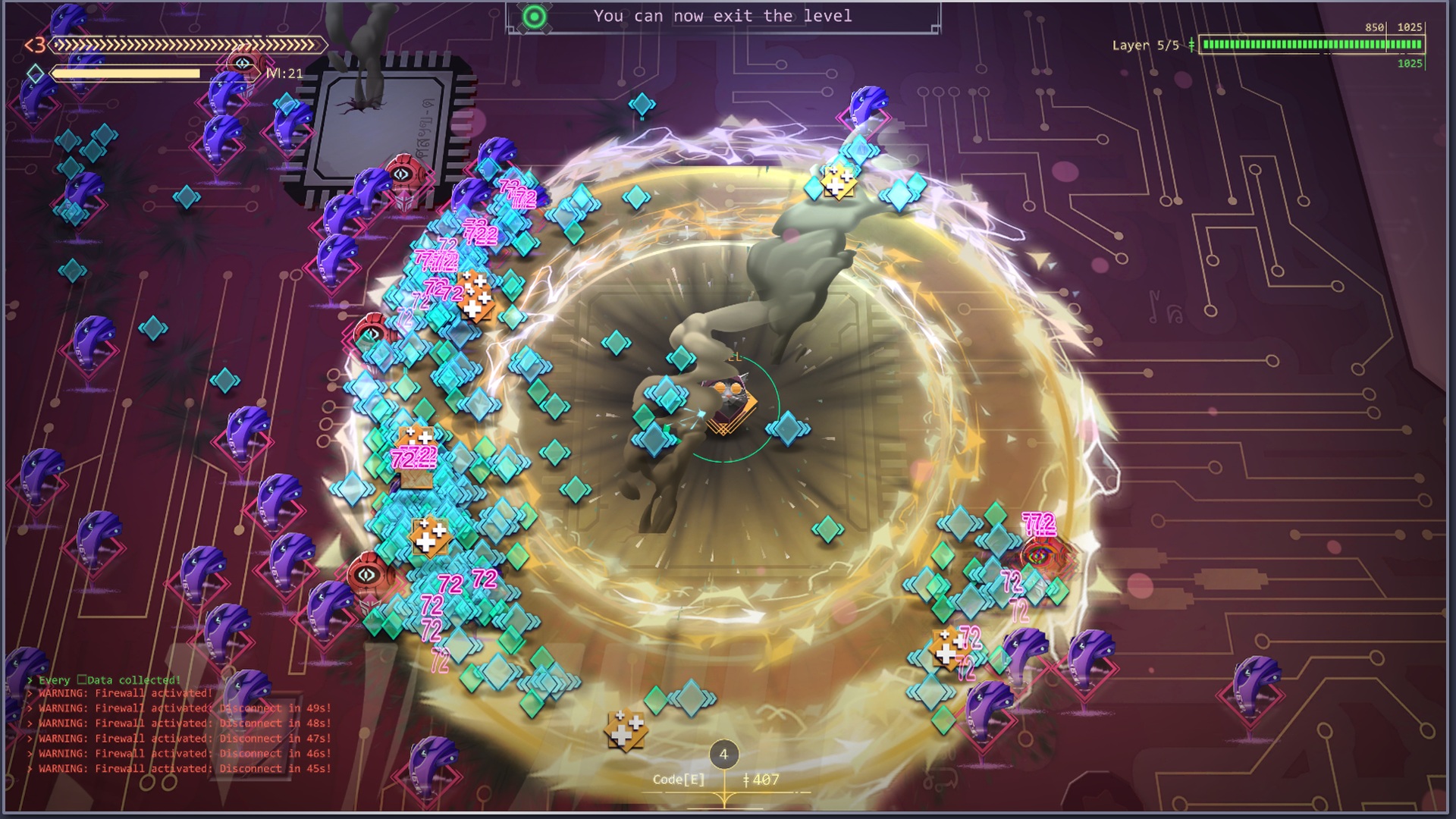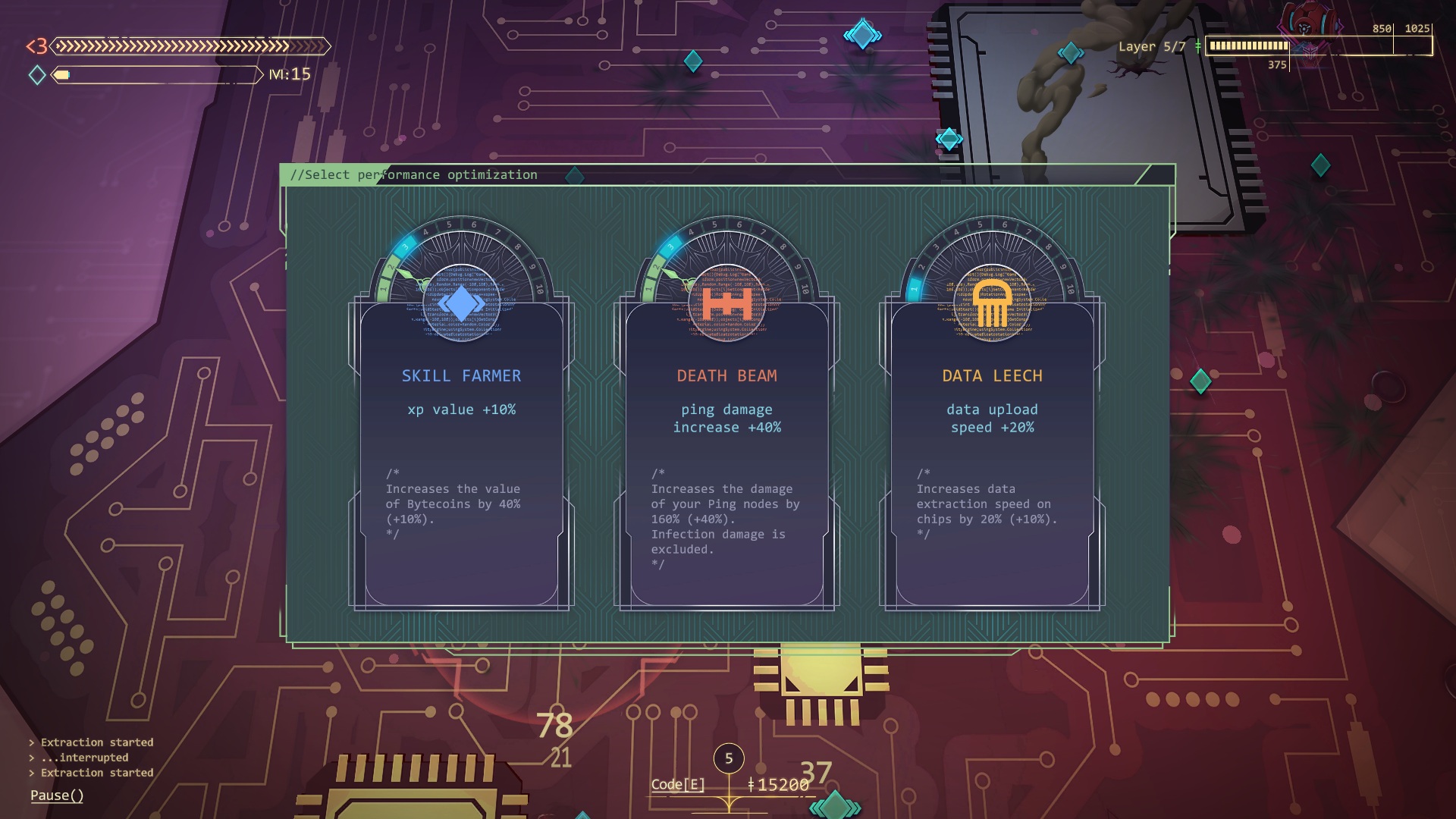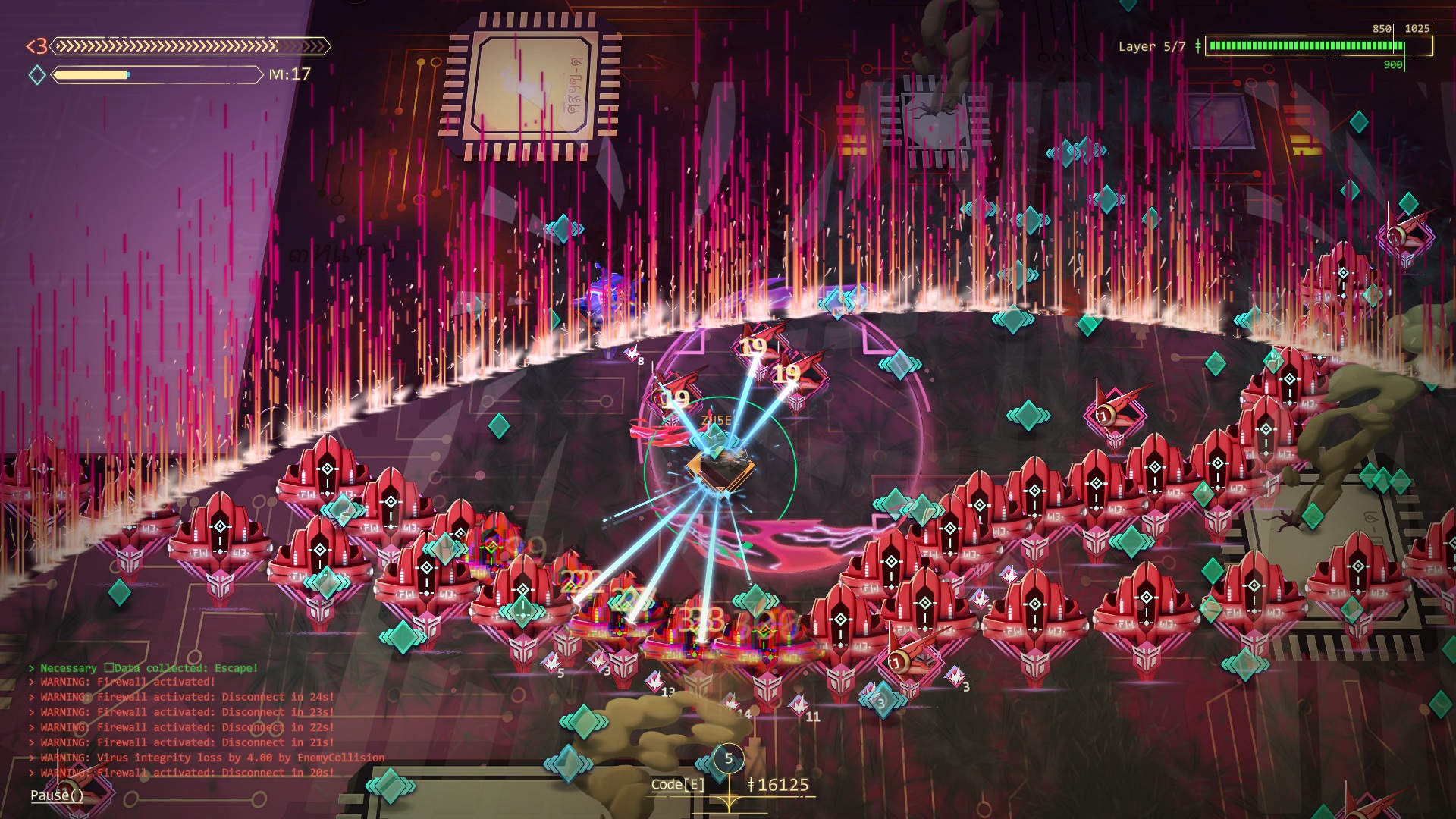If you’ve ever dreamed of being a legendary hacker but find the idea of actual jail time a bit off-putting, ByteRockers’ Games has got your back. Net.Attack() offers a chance to scratch that cyberpunk itch without any of the unpleasant consequences, merging addictive roguelite action with intuitive, node-based programming. Designed to be approachable whether you’re a veteran coder or someone who thinks Java is just coffee, this top-down adventure invites you to turn algorithms into weapons and bugs into battlefield glory.
The core concept of Net.Attack() cleverly combines strategic gameplay with actual coding logic, allowing players to build, customize, and optimize their own abilities through a unique drag-and-drop node system. This might sound intimidating at first, but ByteRockers’ Games has done an impressive job making it accessible, addictive, and just technical enough to make you feel like a genius when your perfectly optimized attack shreds through enemies.
But is Net.Attack() genuinely as revolutionary and engaging as it claims, or is it just another gimmicky puzzle-shooter with a fresh coat of digital paint? Sharpen your coding skills, compile your favorite attack algorithms, and let’s dive into the virtual world of this innovative roguelite.
Enter the Cyber Grid, Setting and Story
Net.Attack() drops you directly into a sleek, neon-lit digital landscape that’s one-part retro cyberpunk, one-part Tron, and entirely enticing. The narrative—though minimalist—positions you as a hacker battling your way through virtual systems, testing your coding skills against security protocols, enemy AI, and other digital adversaries. While you won’t find elaborate cutscenes or extensive lore, the game’s atmosphere immerses you instantly into its vibrant, pixelated cyberspace.
 Storytelling happens primarily through gameplay and visual cues, with brief nods toward hacker-culture tropes. It’s less about telling a complex tale and more about providing context to justify the exhilarating hacking battles you find yourself embroiled in. The “story” here is mostly a means to an end, an engaging setup that supports the game’s innovative mechanics.
Storytelling happens primarily through gameplay and visual cues, with brief nods toward hacker-culture tropes. It’s less about telling a complex tale and more about providing context to justify the exhilarating hacking battles you find yourself embroiled in. The “story” here is mostly a means to an end, an engaging setup that supports the game’s innovative mechanics.
This approach might disappoint narrative-focused players, but it’s more than sufficient for a game that’s primarily about gameplay innovation. The stylish setting is compelling enough to make you feel like a rogue hacker navigating cyberspace, complete with visually striking environments and thematic consistency that effectively sets the tone for your coding battles.
Drag, Drop, Destroy, Gameplay and Mechanics
Gameplay is where Net.Attack() truly shines, merging intuitive coding mechanics with top-down roguelite action. At its heart is a remarkably clever node-based programming system. Players create and optimize their abilities by visually linking code nodes, transforming abstract coding concepts into powerful in-game attacks. Whether constructing simple offensive bursts or intricate defensive maneuvers, the depth and flexibility provided by this system are exceptional.
 ByteRockers’ Games deserves applause for making a potentially intimidating concept surprisingly accessible. Newcomers to coding will appreciate how quickly they grasp the basics, while seasoned programmers can dive deeper, constructing complex chains and custom algorithms. It’s satisfying to watch your carefully crafted code execute devastating attacks in real-time combat scenarios.
ByteRockers’ Games deserves applause for making a potentially intimidating concept surprisingly accessible. Newcomers to coding will appreciate how quickly they grasp the basics, while seasoned programmers can dive deeper, constructing complex chains and custom algorithms. It’s satisfying to watch your carefully crafted code execute devastating attacks in real-time combat scenarios.
The roguelite elements further enrich gameplay. Each session provides random challenges and environments, ensuring no two playthroughs are alike. Death resets progression, but numerous unlockable nodes, characters, and effects allow players to gradually expand their coding arsenal. This system creates an addictive loop—try, fail, optimize, succeed—that continuously rewards creativity and experimentation.
 Net.Attack() successfully marries strategic planning with fast-paced action, providing consistently engaging, skill-based gameplay that challenges both your tactical and creative thinking.
Net.Attack() successfully marries strategic planning with fast-paced action, providing consistently engaging, skill-based gameplay that challenges both your tactical and creative thinking.
Reboot, Retry, Recompile, Multiplayer and Replayability
While Net.Attack() currently lacks traditional multiplayer modes, its inherent design strongly promotes replayability. Each run provides randomized challenges and diverse scenarios, forcing players to continually adapt their coding strategies. The extensive unlock system—including new nodes, abilities, and playable characters—further incentivizes repeated sessions.
 Competing indirectly via leaderboards or shared strategies online adds another layer of community engagement. Comparing optimized builds, learning new coding tricks, and chasing higher scores naturally create an informal multiplayer atmosphere. ByteRockers’ Games has hinted at future content and possibly multiplayer features, which would undoubtedly enhance this already engaging game.
Competing indirectly via leaderboards or shared strategies online adds another layer of community engagement. Comparing optimized builds, learning new coding tricks, and chasing higher scores naturally create an informal multiplayer atmosphere. ByteRockers’ Games has hinted at future content and possibly multiplayer features, which would undoubtedly enhance this already engaging game.
Even without direct multiplayer, the game’s depth and ever-changing gameplay ensure significant long-term engagement. The combination of randomized elements and progressive unlocks guarantees you’ll keep coming back, eager to test new coding strategies and climb the ranks.
Cyber Style Meets Retro Chic, Graphics and Sound
Visually, Net.Attack() is vibrant, slick, and distinctly retro-futuristic. ByteRockers’ Games has opted for a polished, neon-drenched art style reminiscent of classic cyberpunk aesthetics. Each environment pops with pixelated brilliance, visually reinforcing the digital landscape in which your battles unfold. The UI is sleek, clear, and perfectly designed to complement the coding mechanics.
Character models and enemy designs are distinct and visually satisfying, providing immediate feedback about enemy types and threat levels. Animations are smooth, with abilities and attacks visually reflecting your custom-built algorithms, offering satisfying feedback for your coding efforts.
 Sound design effectively matches the visuals, featuring punchy, electronic beats and sound effects that enhance immersion. The music maintains an energetic tempo that keeps adrenaline pumping during battles, perfectly complementing the visual aesthetics and gameplay rhythm.
Sound design effectively matches the visuals, featuring punchy, electronic beats and sound effects that enhance immersion. The music maintains an energetic tempo that keeps adrenaline pumping during battles, perfectly complementing the visual aesthetics and gameplay rhythm.
Together, graphics and audio create an immersive, cohesive cyberpunk atmosphere that complements gameplay perfectly, enhancing the overall enjoyment and immersion significantly.
Final Debugging Session, Final Thoughts
Net.Attack() brilliantly achieves its ambitious goal of combining coding principles with accessible roguelite gameplay. ByteRockers’ Games has delivered an innovative, addictive, and immensely satisfying experience that makes the daunting world of algorithms approachable and fun, whether you’re a seasoned coder or simply curious.
 The gameplay’s depth, flexibility, and strategic possibilities, combined with high replayability, ensure a continuously rewarding experience. Visually engaging and audibly satisfying, Net.Attack() masterfully blends style with substance, creating a unique niche within the crowded roguelite genre.
The gameplay’s depth, flexibility, and strategic possibilities, combined with high replayability, ensure a continuously rewarding experience. Visually engaging and audibly satisfying, Net.Attack() masterfully blends style with substance, creating a unique niche within the crowded roguelite genre.
If you’re looking for a fresh take on roguelite action, an accessible introduction to coding, or simply an addictive game with strategic depth, Net.Attack() deserves a prime spot in your Steam library. Prepare to debug, deploy, and dominate—your virtual enemies don’t stand a chance.
We prepared this review with a digital copy of Net.Attack() for the PC version provided by Evolve PR.




